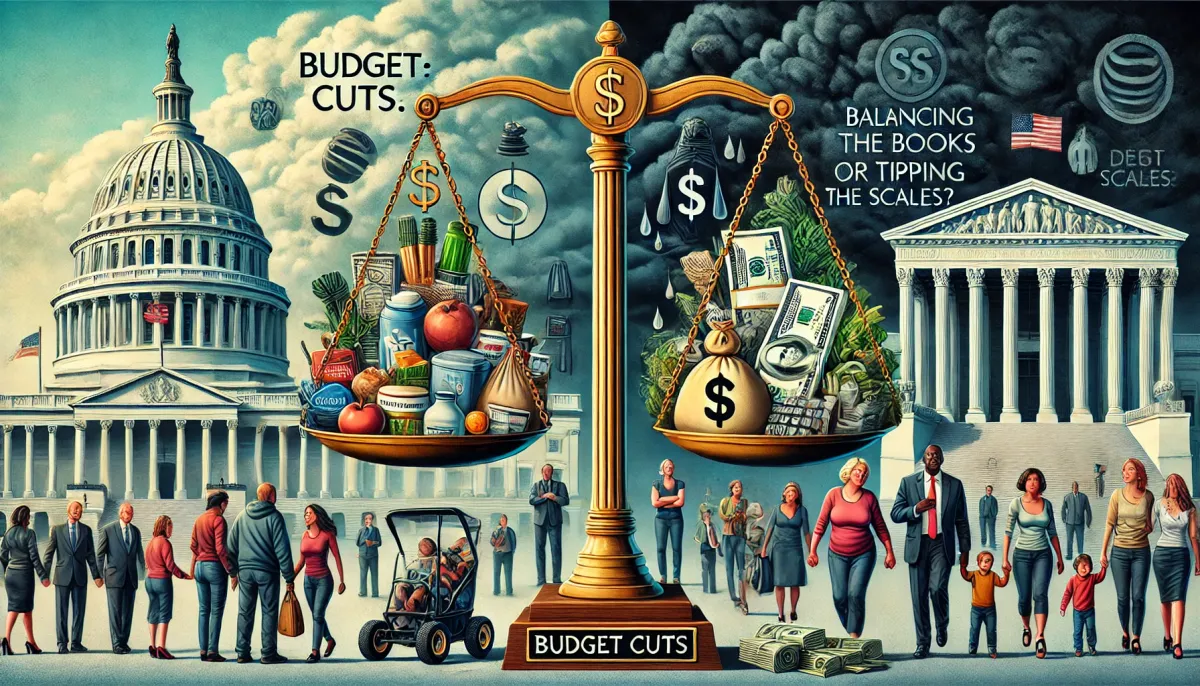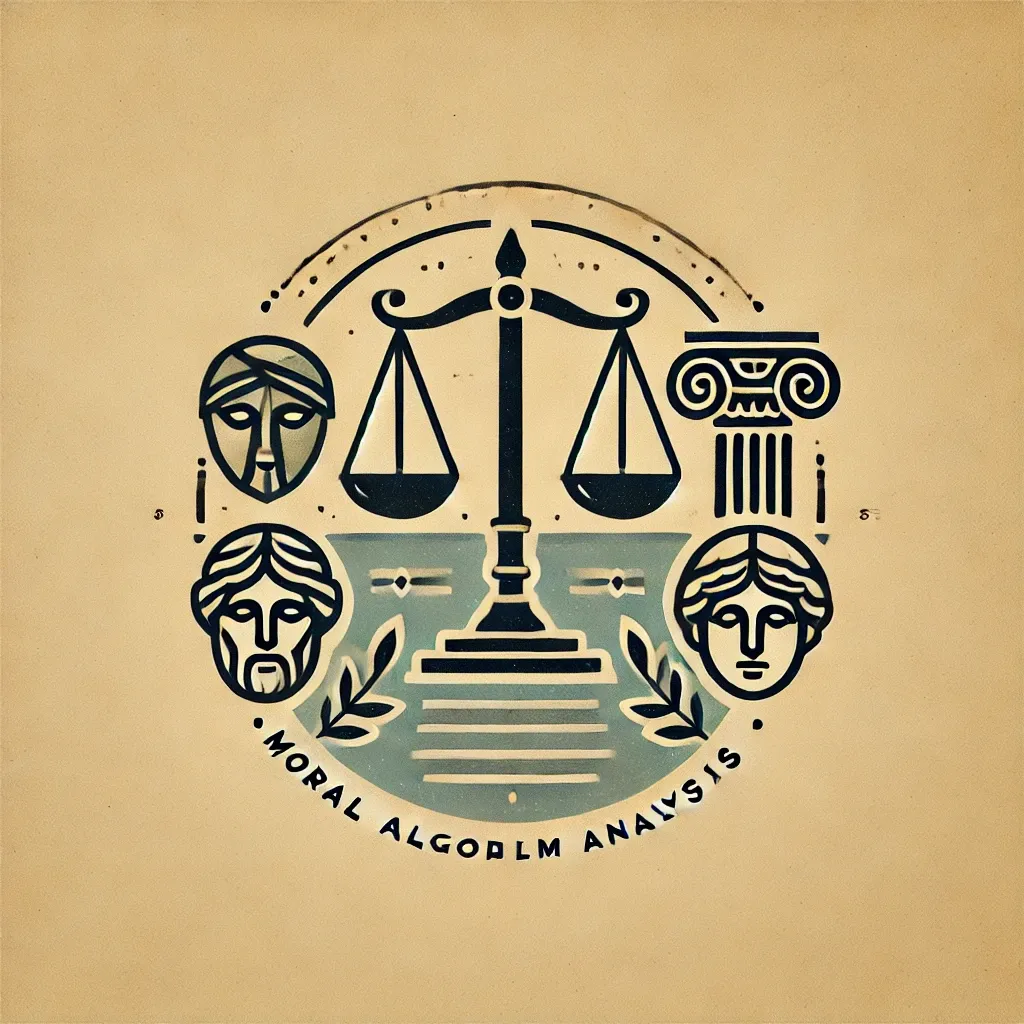Trump's Cuts
This analysis seeks to uncover how these budgetary decisions align with or deviate from the ethical standards of governance by focusing on their tangible impact on different income levels and demographic groups.

Introduction
In evaluating the proposed 2025 federal budget cuts through the lens of the Moral Algorithm—a principle of governance that emphasizes the common good, protection, prosperity, and happiness of all citizens—it becomes evident that the proposed measures disproportionately affect lower- and middle-income Americans. This analysis seeks to uncover how these budgetary decisions align with or deviate from the ethical standards of governance by focusing on their tangible impact on different income levels and demographic groups.
Process of Discovery
To analyze the alignment of the proposed budget with the Moral Algorithm, the following steps were undertaken:
- Detailed Budget Review:
- Examined the 2025 budget document, focusing on allocations and projected cuts across healthcare, social services, climate policy, and education sectors.
- Identified areas of significant reductions, including Medicaid, SNAP, TANF, and climate programs.
- Evaluation of Proposed Cuts:
- Incorporated the "House Budget Committee Offset Menu" to assess potential savings and the specific programs targeted for reductions.
- Quantified the financial impacts of these cuts, highlighting the distribution of savings across sectors.
- Impact Assessment by Demographics:
- Cross-referenced the budget cuts with population data to identify which income levels and demographic groups would bear the greatest burdens.
- Considered the ripple effects on healthcare access, food security, education, climate resilience, and long-term economic stability.
- Alignment with the Moral Algorithm:
- Applied the principle that government should act for the common good, ensuring safety, prosperity, and happiness for all citizens.
- Evaluated whether the budget promotes or hinders these goals, particularly for vulnerable populations.
- Synthesizing Findings:
- Summarized the anticipated outcomes of the cuts for low-income households, working-class families, and middle-income citizens.
- Highlighted areas where the budget disproportionately benefits higher-income groups or corporate interests.
Purpose of This Analysis
This evaluation aims to provide a clear and comprehensive understanding of how the proposed budget changes will be felt by ordinary Americans. By linking fiscal policies to real-world consequences, we aim to illuminate whether the government's decisions reflect its duty to prioritize the welfare of the many over the interests of the few. The results also serve as a tool for policymakers and citizens to assess the ethical implications of these budgetary priorities.
Summary of Affected Demographics and Income Levels
The proposed budget disproportionately affects low- and middle-income Americans, particularly vulnerable groups such as:
- Low-income households reliant on Medicaid, SNAP, and TANF.
- Seniors and retirees dependent on Medicare.
- Working-class families affected by cuts to education, job training, and food assistance.
- Climate-vulnerable communities, often low-income or minority, impacted by reduced environmental protections.
- Students and young professionals burdened by the elimination of student debt relief programs.
How the Cuts Impact Different Groups
1. Healthcare (Low- to Middle-Income Households, Seniors)
- Medicaid Cuts ($2.3 trillion):
- Millions of low-income families, particularly children, disabled individuals, and single parents, will lose access to Medicaid services due to stricter eligibility (e.g., work requirements).
- Seniors relying on Medicare may face higher costs for essential services.
- Affordable Care Act Changes:
- Immigrants and low-income individuals benefiting from premium tax credits will see reduced support, limiting their ability to afford insurance.
Demographics Affected:
- Households earning less than 138% of the federal poverty line (FPL), currently the cutoff for Medicaid eligibility in many states.
- Elderly Americans living on fixed incomes.
2. Food and Nutrition Assistance (Low-Income Families, Working-Class Individuals)
- SNAP Cuts ($274 billion):
- Low-income families will face increased food insecurity. These cuts disproportionately affect households with children, minorities, and rural populations.
- TANF Cuts ($36 billion):
- Families earning below 200% of the FPL will lose access to cash assistance, exacerbating financial hardship for single-parent households and those living in poverty.
Demographics Affected:
- Families with incomes under $50,000 annually.
- Rural and urban households experiencing food insecurity or financial instability.
3. Education and Workforce Development (Middle-Income Students and Workers)
- Elimination of Student Loan Relief ($200-330 billion):
- Students and young professionals from middle- and lower-income families will remain burdened by debt, reducing their disposable income and long-term financial stability.
- Cuts to Job Training and Public Education:
- Workforce development for middle-class workers seeking new skills will decline, limiting economic mobility.
Demographics Affected:
- Young adults (ages 18-35) with federal student loans.
- Workers in sectors requiring reskilling, particularly in rural and deindustrialized regions.
4. Climate Policy and Energy (Low-Income, Minority, and Rural Communities)
- Rollback of Green Energy Investments ($468 billion):
- Reductions in renewable energy funding and climate resilience initiatives will lead to increased costs for energy and heightened vulnerability to environmental disasters.
- Low-income and minority communities, often located in flood-prone or high-risk areas, will bear the brunt of these impacts.
Demographics Affected:
- Rural households reliant on traditional energy sources.
- Urban, low-income communities at greater risk of pollution and climate change effects.
5. Social Services (Low-Income, Disabled, and Elderly Populations)
- Social Services Block Grant Elimination ($15 billion):
- Programs offering childcare, elder care, and housing support will be scaled back, straining families who rely on these services.
Demographics Affected:
- Working parents, especially single mothers.
- Elderly individuals requiring in-home care or housing assistance.
Overall Economic Impact by Income Level
- Low-Income Households (< $40,000 annually):
- Will feel the most severe effects, including reduced access to healthcare, food assistance, and housing support.
- Increased vulnerability to climate-related disasters without safety nets.
- Working-Class Families ($40,000-$70,000 annually):
- Will face higher healthcare costs, reduced job training opportunities, and challenges in accessing public education programs.
- Limited opportunities for upward mobility.
- Middle-Income Households ($70,000-$120,000 annually):
- May experience reduced public education and workforce training opportunities, as well as financial strain from maintaining healthcare and paying off student loans.
- High-Income Households (>$200,000 annually):
- Least affected due to minimal reliance on public programs. Potentially benefit from tax credits and reduced regulation.
Alignment with the Moral Algorithm
The proposed budget contradicts the principles of the Moral Algorithm because:
- It undermines protections and support for low- and middle-income Americans.
- It prioritizes deficit reduction and narrow fiscal interests over the safety, prosperity, and happiness of the general population.
- It disproportionately benefits higher-income groups and corporations at the expense of vulnerable demographics.
Conclusion: The budget creates significant hardship for low- and middle-income citizens, reducing their access to vital services and economic mobility. It fails to uphold the "common good" by prioritizing fiscal austerity over equitable governance. If adopted, these measures could exacerbate inequality and erode trust in government institutions.
